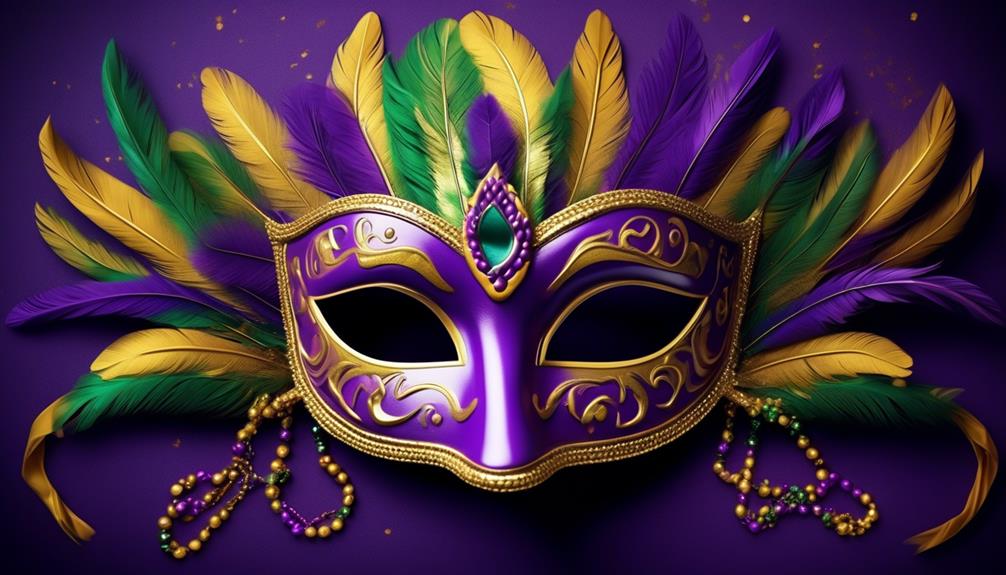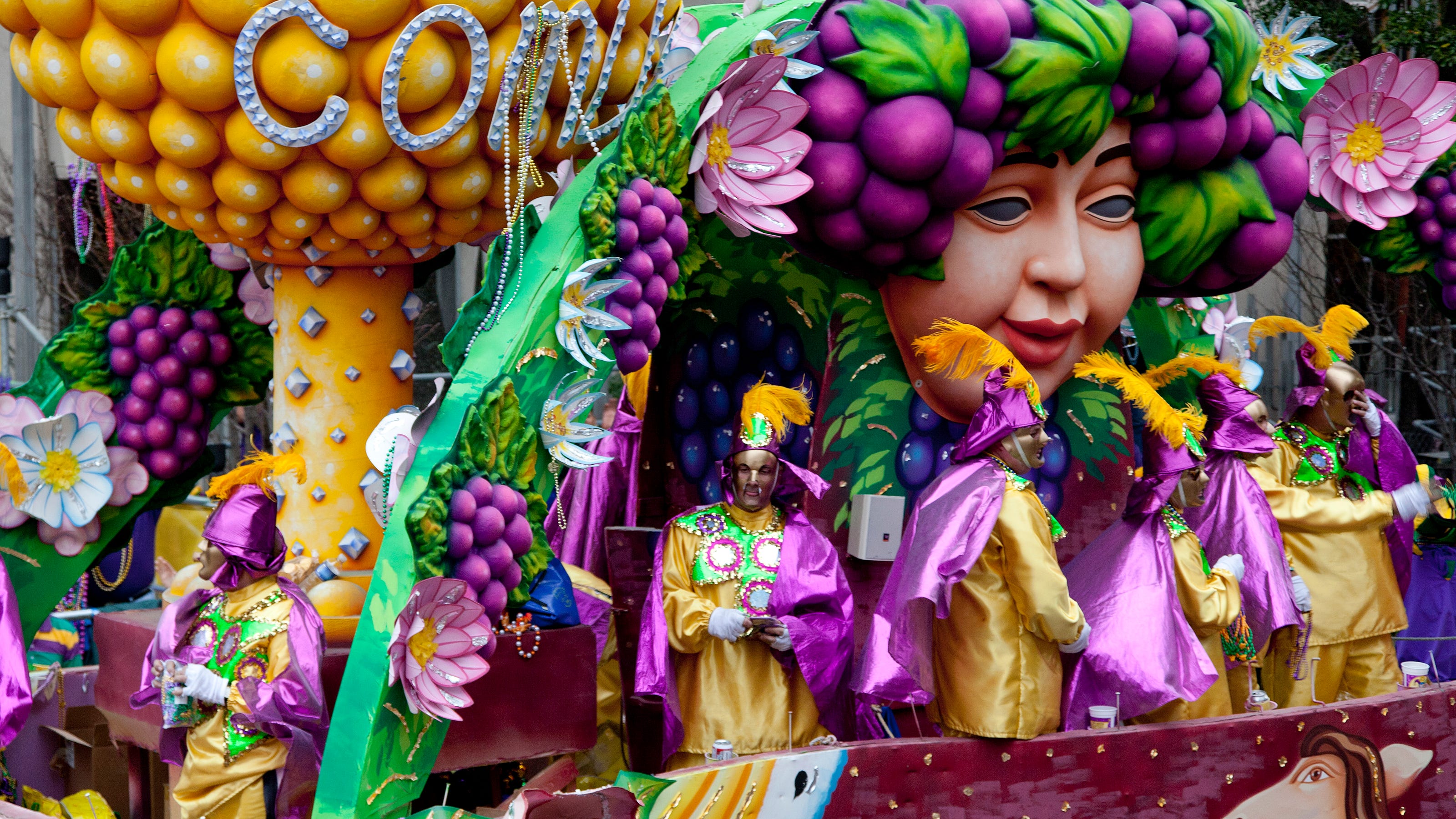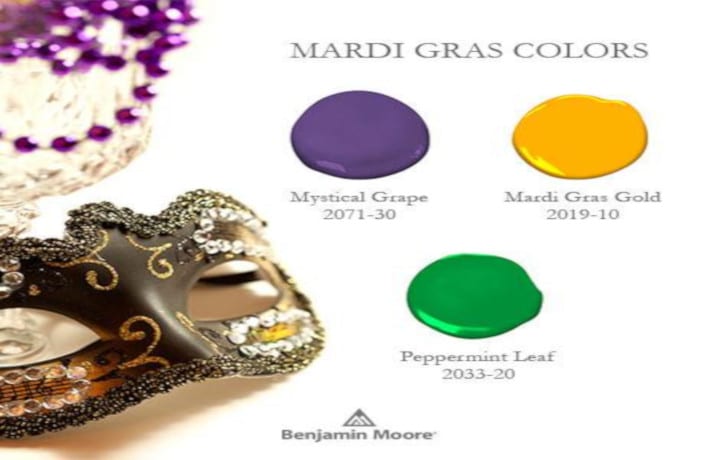Gallery
Photos from events, contest for the best costume, videos from master classes.
 |  |
 |  |
 |  |
 | |
 |  |
 |  |
While doing research for his book, Laborde and his team took a step back and asked the question, “Why are there three colors for Mardi Gras – why not just one or two?” They came to the conclusion that the Rex founders believed “a king must have a kingdom and a kingdom must have a flag” –and because the United States, Great Britain Anywhere Mardi Gras is observed, the three colors dominate proceedings. No matter the location, you can spot these colorful hues on costumes, beads, masks, cakes and street decorations during Carnival season. Some examples of major international cities that now celebrate Mardi Gras with purple, green and gold include: Rio de Janeiro, Brazil The colors of Mardi Gras have their roots in the French tradition of using colors to symbolize the Christian faith. The three main colors – purple, green, and gold – were chosen to represent the Trinity, with purple symbolizing royalty, green representing faith, and gold representing purity. There are three Mardi Gras colors to represent a flag with three colors. According to the site Mardi Gras New Orleans, when local historian Errol Flynn Laborde researched the 125th anniversary of We’ll look at the origins of how these colors came to represent Mardi Gras in New Orleans and the roles they play in the parades, costumes, and celebrations. Understanding the background of the Mardi Gras colors provides a deeper appreciation for the rich culture and customs around this world-famous carnival. Let’s explore the origins and meaning of these three colors that shape the exhilarating spirit of Mardi Gras. Origins of the Mardi Gras Colors. The colors of Mardi Gras – purple, green, and gold, can be found as early as 1872 at a carnival organized by the company Rex for a Russian aristocrat’s arrival. The Values Represented by Mardi Gras Colors. The Mardi Gras colors, rich in history and cultural significance, represent a set of values that are central to the celebration. Justice, Faith, and Power. The three primary colors of Mardi Gras – purple, green, and gold – represent justice, faith, and power, respectively. The colors of Mardi Gras have their roots in the medieval tradition of Carnival, which was celebrated in Europe before the Protestant Reformation. During this time, the colors of the season were often associated with the three aspects of the Trinity: the Father (purple), the Son (green), and the Holy Spirit (gold). The colors have become so intertwined with Mardi Gras that their mere presence can evoke the spirit of the celebration, even in places far from New Orleans. Cultural Evolution and Global Influence. The impact of these Mardi Gras colors has spread well beyond their initial purpose, inspiring artists, designers, and cultural festivities globally. Mardi Gras is celebrated right before Lent, a period of reflection and repentance leading up to Easter. The symbolic colors tie into this religious context. Use of Colors During Mardi Gras. The colors purple, green and gold are on vibrant display all over New Orleans during Mardi Gras celebrations. Here are some of the ways they are incorporated: Choosing purple, gold and green as Mardi Gras colors would ensure that the Rex organization, and Mardi Gras, were represented by both metals (gold) and colors (purple and green). While flags can have various numbers of colors, more flags have three colors than any other number. In medieval times, power was associated with wealth. The color gold in Mardi Gras celebrations reflects God’s power over humanity. The colors come together to form the Christian virtues of justice, faith, and power. By displaying these colors, Mardi Gras celebrators demonstrate their commitment to these values during the Carnival season. There are seven main Mardi Gras symbols. They are Mardi Gras parades, beads, colors, Mardi Gras throws, masks, the fleur de lis and king cakes. During Carnival you’re bound to see many of these symbols! People sometimes refer to the entire Carnival season as Mardi Gras, but Mardi Gras is technically only one day, the Tuesday before Lent. In this article, we’ll delve into the meaning behind the colors of Mardi Gras beads, exploring their origins, symbolism, and significance in modern-day celebrations. The History of Mardi Gras Beads. Mardi Gras beads have their roots in the medieval European tradition of throwing flowers and other decorations during Carnival celebrations. These colors were chosen to represent the three main principles of the Mardi Gras season: fun, revelry, and excess. Mardi Gras is a time to let loose and enjoy yourself before the more somber season of Lent begins. If you’re looking to join in on the fun, make sure you’re wearing the official colors of Mardi Gras! Mardi Gras Symbols And During the Mardi Gras season, spectacular parades take over the streets of New Orleans with marching bands, elaborate floats, and lively performers. The colors of Mardi Gras are prominently featured on the floats, banners, and other decorations. Each float throws Mardi Gras beads and other trinkets representing these colors to the cheering crowd. Conclusion. The Mardi Gras colors of purple, green, and gold are an integral part of the celebration’s tradition and culture. They are used to represent the three virtues of faith, justice, and charity, and are often worn as a symbol of one’s devotion and commitment to their faith. The colors are meant to represent the three main themes of Mardi Gras: justice, faith, and power. By using these colors in decorations, costumes, and floats, the Rex Organization and other krewes are able to communicate these themes to the public and create a sense of unity and shared experience. The colors are an essential part of the Mardi Gras tradition, and understanding their meaning can add depth and richness to the experience. Whether you’re a seasoned Mardi Gras enthusiast or just curious about the celebration, this article will provide you with a comprehensive understanding of the three Mardi Gras colors and what they represent. What is the significance of the three colors of Mardi Gras? The three colors of Mardi Gras – purple, green, and gold – have a rich history and significance that goes beyond their individual meanings. Together, they represent the core values and themes of Mardi Gras, which include indulgence, rebirth, and community.
Articles and news, personal stories, interviews with experts.
Photos from events, contest for the best costume, videos from master classes.
 |  |
 |  |
 |  |
 | |
 |  |
 |  |